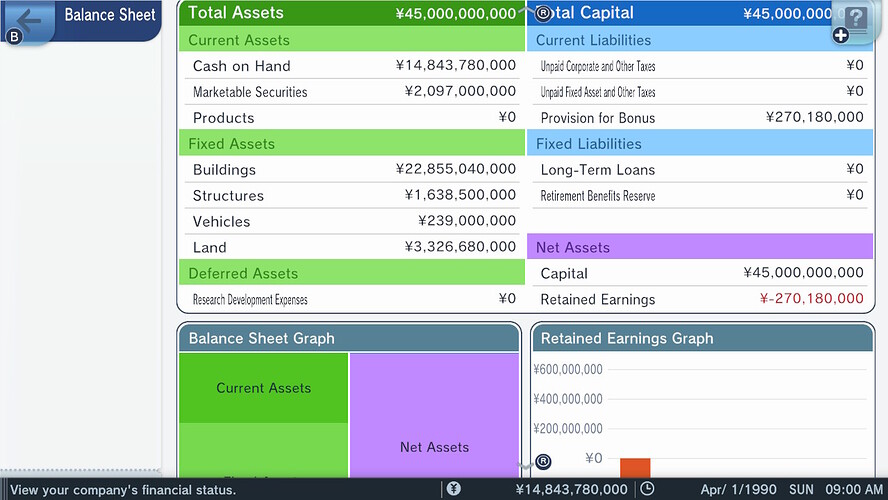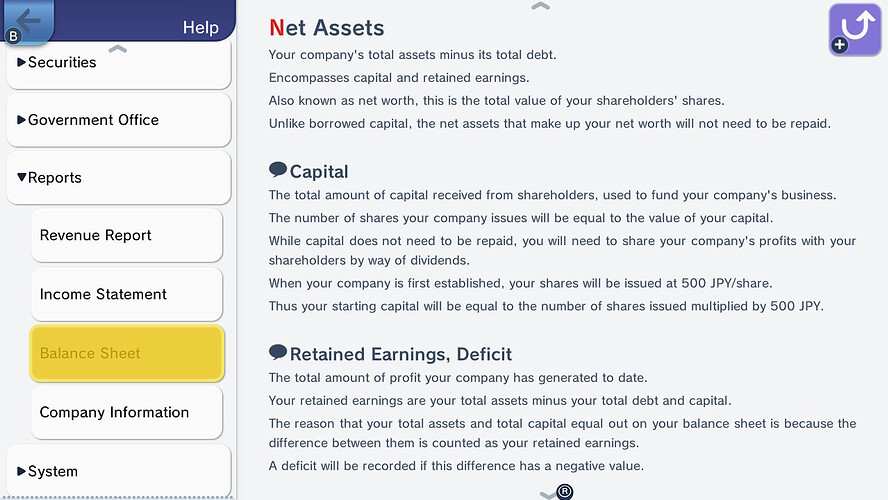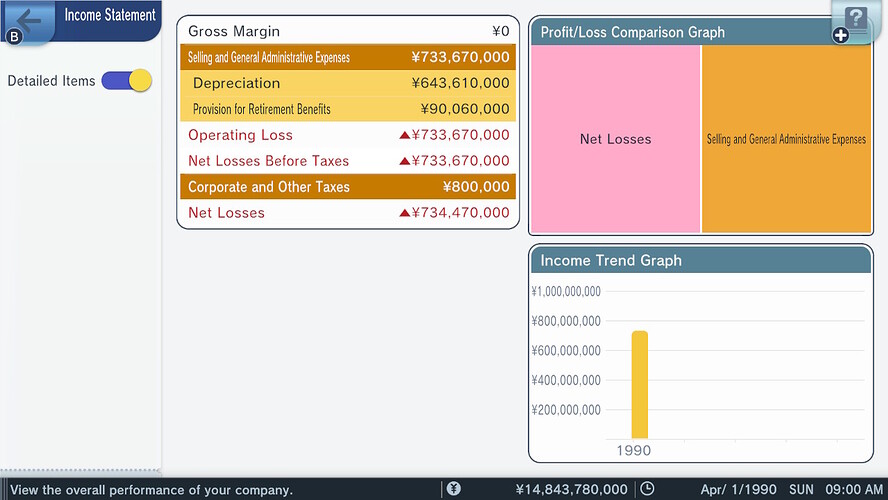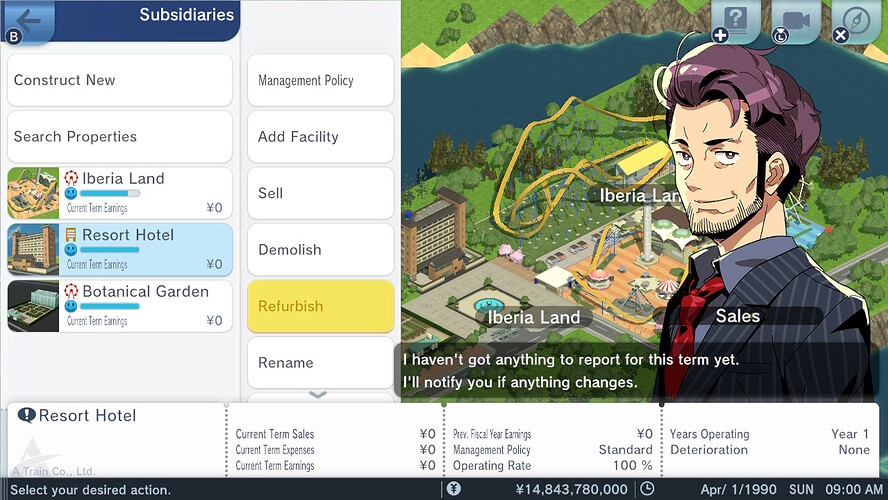Plans to do a short update to reboot proceedings, still ends up playing and writing for several hours…
Guess who is back with a brand new installment of quirky, charming Japanese railway business management. Life and pneumonia might have kept me either busy or knocked me down for a while but now I am back to suck more people into this wonderful game, bwahaha. Seriously though, 75+ hours of accrued playtime and still loving it.
Today’s scheduled train service leaving for City of Hopes & Dreams is about to depart the station. Please ensure you have finished boarding the train and have your tickets ready for inspection by the conductor!
Let’s Play City of Hopes & Dreams - A new challenge approaches…
Click to reveal...
Welcome back to A-Train: All Aboard! Tourism and the City of Hopes & Dreams scenario. On today’s agenda is discussing the ‘Initial Public Offering’ completion condition. This is a completion condition which we have yet to encounter and which is slowly introduced to players during the City of Hopes & Dreams scenario, which acts as the game’s second tutorial scenario when played on Easy difficulty. So, strap yourselves in because we are about to get all “accountant speak” up in here!
Broadly speaking, an Initial Public Offering (IPO) occurs when our private corporation begins selling our company’s stock on the public stock exchange. Which can also be referred to as a stock listing, since we will be listing our company on the stock exchange. Conducting an IPO can be an excellent way of unlocking additional capital, since any shares sold to the public during the IPO bolsters our company’s coffers. However, listing our company on the stock exchange does not come without its own unique risks and potential disadvantages.
Conducting an IPO occurs through the ‘Plans’ menu and will occupy a project slot whilst it is being executed by our company’s sales department. Importantly, at the beginning of the scenario we only have one project slot. However, if we enact the ‘Sales Department Expansion’ plan it grants us a second project slot and the ability to execute two plans in parallel. Thus, conducting an IPO can come with potential opportunity costs, as it will be 120 days that could have been allocated to executing other plans.
However, before our company can even begin to contemplate conducting an IPO we must first meet several key criteria. The first of those criteria relates to the current total value of our company’s net assets, which must be worth at least 9,500,000,000 Japanese Yen. Thankfully, this is something that we have already achieved. Our second criteria relates to something called Retained Earnings, which we will broach in detail later, and which must be at least 1,900,000,000 Japanese Yen. Finally, our third criteria requires the company to achieve a surplus for at least two consecutive financial years, prior to us instigating the IPO.
Determining our company’s Retained Earnings is as simple as consulting the Balance Sheet screen within the Reports menu. At the beginning of the City of Hopes & Dreams scenario we can see that currently our Retained Earnings are forecast to be in the negative, a loss of 270,180,000 Japanese Yen. This negative Retained Earnings value, or Retained Deficit if you would rather think of it like that, is due to the employee bonuses that will be paid on July 25th and December 25th of the current (financial) year. Therefore, we can expect our Retained Earnings to become positive by the end of the current financial year, as we are planning to achieve a surplus during the company’s first year of operation.
So, what are Retained Earnings I hear you ask? Well the in-game manual defines it as such:
Which is probably the best explanation that I can give since I am in no way at all a professional accountant. In layman’s terms, operating at a surplus will improve the value of our Retained Earnings or Retained Deficit whilst running at a loss will worsen it. The easiest way to ensure that our company’s Retained Earnings grow year-upon-year is to constantly achieve a profit at the end of each financial year.
At the beginning of the City of Hopes & Dreams scenario we are forecast to achieve a net loss of 734,470,000 Japanese Yen for the financial year. The bulk of this current predicted financial loss is asset depreciation, which according to my understanding spreads the cost of a tangible or physical asset over its useful or expected lifespan. It also includes the loss in fair value that assets typically experience as they age, because yes the game does indeed model our assets (i.e., buildings and vehicles) deteriorating over time.
Opening the subsidiaries menu and examining each of our existing subsidiaries we discover that Iberia Land, the Resort Hotel, and our Botanical Garden begin the scenario with no deterioration. Thus, these subsidiaries have a long expected, or useful, lifespan ahead of them. However, as the deterioration status of a subsidiary increases with the passing of time, typically over the course of years, it adversely impacts the sales revenue of the subsidiary. Fortunately, old and dilapidated subsidiaries can be refurbished to bring their premises back to being “just like new”. Which in game terms means the deterioration status of the subsidiary is reset. Amazing what a fresh coat of paint can do for sales revenues!
Obviously, with a prudent business strategy our company’s financial forecast should eventually change from a predicted loss into a predicted profit. Thus, we expect to see this forecast gradually change over the duration of the financial year as our company begins generating revenue from a combination of existing and new revenue streams. Certainly, our company’s aim heading into our first year of operation is to invest in such a way that our total revenues exceed our total costs, in spite of the massive amounts of capital we plan to invest into the region.
Alas, that concludes part two of Let’s Play City of Hopes & Dreams and our initial look into the ‘Initial Public Offering’ completion condition. When our company is closer to conducting an IPO we will examine the factors, such as our company’s credit rating, which influence how much public capital our IPO raises. Next time though we will begin outlining our business strategy and, if time so permits, begin putting it into action. So, until the we next meet aboard the A-Train, I hope you have a safe and wonderful journey!
Yeah, it is available from the second scenario onwards. Though, since the Advanced Settings are global rather than scenario or save-based, several of the advanced settings work inside the first tutorial scenario once enabled elsewhere. So, more like hidden from being accessed during the first tutorial rather than them not functioning at all.
Though, how the developers arrived at what is deemed an “advanced setting” is curious at times. Some of the options locked away were available right from the get go in A-Train 3D // A-Train PC Classic. Would have considered the “Change Formation” function a pretty important basic gameplay feature personally.




